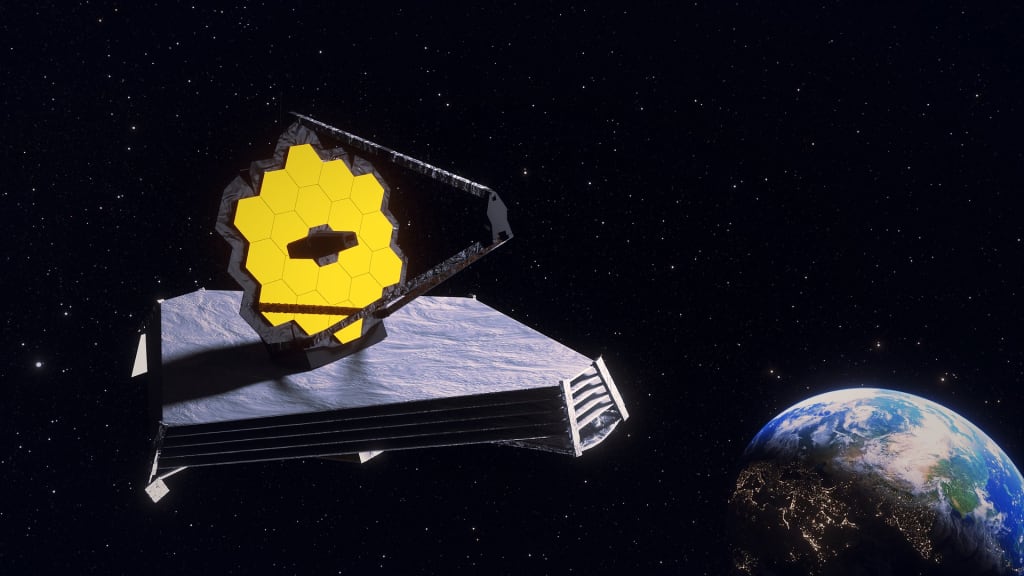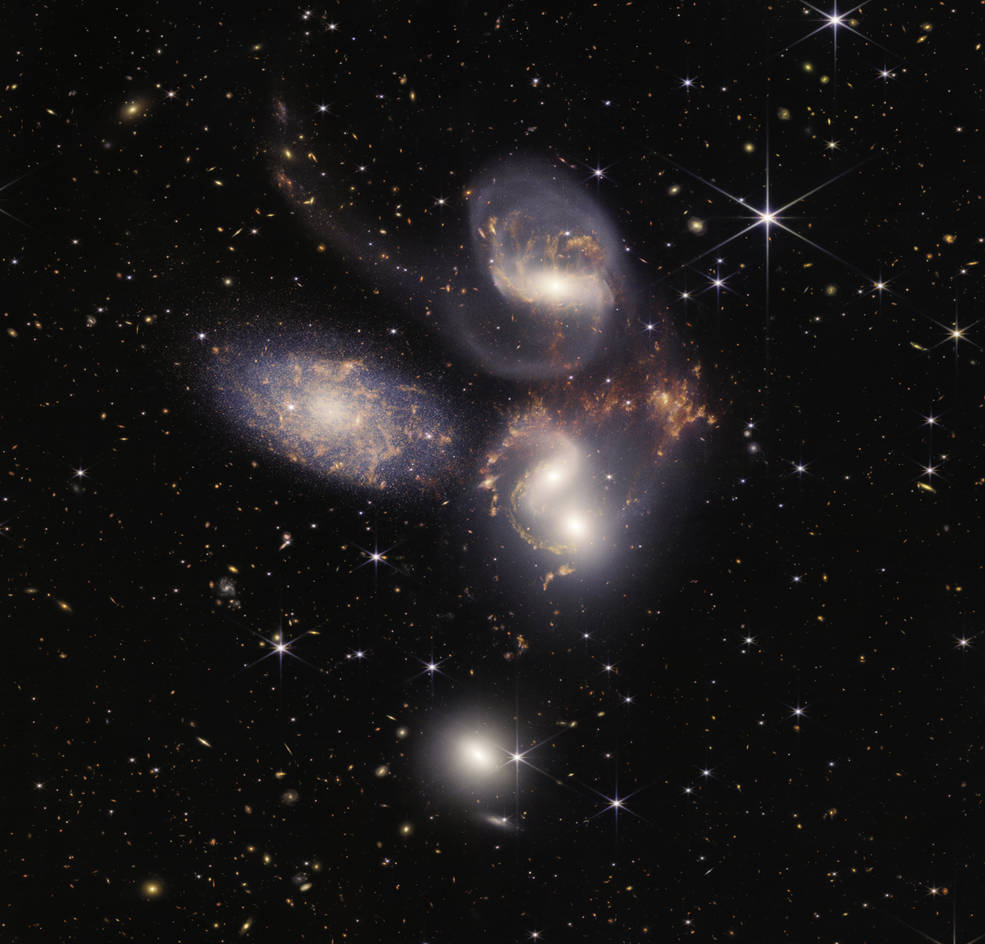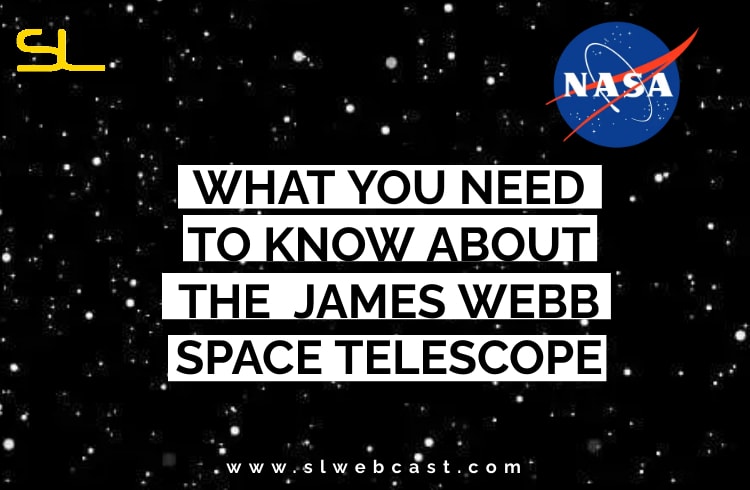Looking at the night sky dazzling with heavenly bodies and with our galaxy (depending on where you’re located), the Milky Way strikingly sprayed across the sky, surely leaves one spellbound at the sublimeness of the universe. But imagine uncovering these specks of light at a more distinct angle, revealing what mankind has been trying to detect for years.
On the 12th of July, high-quality images of the unseen splendours of the cosmos were released by NASA’s James Webb Space Telescope (JWST), a collaboration with the Canadian Space Agency (CSA) and the European Space Agency (ESA) at a distance of nearly one million miles away from our home planet.

This historical moment was streamed at a live webcast from Goddard Space Flight Center in Greenbelt, Maryland. The pictures taken by the largest space telescope JWST, are stated to be the most extensive cosmic view ever taken, encompassing the light from galaxies that have taken billions of years to reach us.
“Today, we present humanity with a groundbreaking new view of the cosmos from the James Webb Space Telescope – a view the world has never seen before,” said NASA Administrator Bill Nelson.
The stellar imagery was shown to US President, Joe Biden during a White House briefing.
“These images are going to remind the world that America can do big things, and remind the American people – especially our children – that there’s nothing beyond our capacity,” President Biden remarked.

The picture shows a galaxy cluster(estimated as thousands of galaxies) SMACS 0723 with the finest infrared view of the universe as it looked 4.6 billion years ago.
This was unveiled to President Joe Biden and Vice President Kamala Harris at the White House live event on the 11th of July. The capture taken by Webb is considered to be like a grain of sand held at arm’s length, amazingly just a tiny bit of the expanding universe.
“Light travels at 186,000 miles per second. And that light that you are seeing on one of those little specks, has been travelling for over 13 billion years,” said NASA administrator Bill Nelson.
“And by the way, we’re going back further, because this is just the first image. They’re going back about 13 and a half billion years. And since we know the Universe is 13.8 billion years old, you’re going back almost to the beginning.”
The $10 billion space telescope was launched on the 21st of December 2021, on an Ariane 5 rocket from French Guiana, South America. It is considered as the successor to the renowned Hubble Space Telescope. Designed to scrutinize the expanding universe, the JWST has two overarching targets. To take photographs of the earliest stars to shine in the Universe billions of years ago; the other being, to check if distant planets could harbour life.

This panorama of “cosmic cliffs” sequined with radiating stars is the fringe of a nearby, stellar nursery called NGC 3324 in the Carina Nebula.
“There’s so much going on here, it’s so beautiful,” Amber Straughn, an astrophysicist at NASA’s Goddard Space Flight Center in Maryland, said during the live event. “Today, for the first time, we’re seeing brand new stars that were previously completely hidden from our view.”

The JWST operates in an infrared spectrum because, unlike visible light, infrared red light has a longer wavelength and can pass through objects in space such as clouds of dust and gas.
The telescope, which originates its name from James Edwin Webb, who was the administrator of NASA from 1961 to 1968 during the Mercury, Gemini and Apollo programs, uses infrared to make observations of the galactic bodies. Using its 6.5m diameter golden mirror, JWST discerns with a frequency range that is lower than Hubble and from long-wavelength visible light through mid-infrared.
The James Webb Space Telescope should be kept at a temperature below 50K (-2230C ; -3700F ) because the light that is collected should not impede the infrared light emitted by the telescope itself.

Five galaxies moving rapidly in space called Stephen’s Quintet are revealed by the James Webb Space Telescope and are shown unlike ever before. These five star systems also known as Hickson Compact Group 92 (HGC 92) are said to be in a “cosmic dance”.

Here we get a glimpse of the Southern Ring Nebula, which is the remnants of a supernova. The split picture displays two views of the nebula; the left side shows the nebula in near-infrared light from JWST’s NIRCam. On the right, mid-infrared light from the observatory’s MIRI instrument is shown.

“We are seeing things better and more detailed than ever before, not only nearby but far away. All this is gas. This is the star that has released this gas into space. These objects are all over the galaxy and this is an example of what the telescope can do.” said renowned American astrophysicist Neil deGrasse Tyson, about the Southern Ring Nebula on NBC news.
The powerful James Webb Space Telescope made history with these stunning captures of the divinity of space and is yet to further unravel the depths of the unseen.


